When Should You Send Emails? Here Are the Days and Times that Work Best

Have you ever wondered when the best time of day to send your email is?
Or even the best day of the week?
With typical email click rates sitting at just a few percent, you should consider anything that can help you optimize your emails.
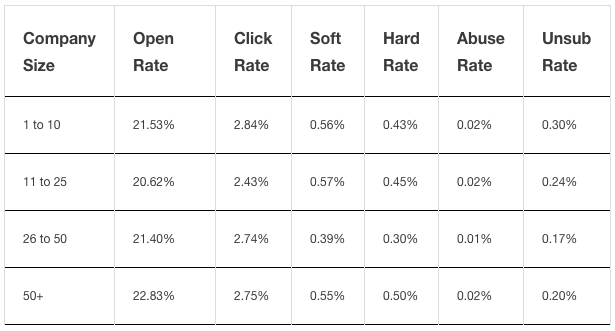
It’s just like a social media strategy.
You want the most engagement on your social post, so you look up the best days of the week and best times of day to post it.
Let’s be real. Nobody wants their Instagram post to go unliked.
But we’ve all been there.
You put the finishing touches on an amazing post or email. However, it goes out at an obscure hour because you couldn’t wait any longer.
And then you only grab half the likes or opens you got last time.
There’s a reason this commonly happens.
People are much more active on certain days and even within small time frames.
Those time ranges also change depending on your customers.
So if you want to get the most opens and clicks from your emails, you need to think through your sending strategy.
If you don’t, you can expect to report those measly click and open rates at your next meeting.
Here’s how to craft your email strategy around statistical data by choosing the best days and times for sending.
The best days to send emails
There’s a limitless number of studies about emails.
They span everything from the best subject lines to the best formats, best days, and of course, sending times.
And many times they have conflicting information.
One study tells you to send them on Saturday. But the other says you should never send on Saturday.
The next says Monday, while the others say Tuesday.
How on earth are you supposed to know which study is the most accurate? How do you know which data is right?
Lucky for us, CoSchedule took multiple studies and cross-referenced the data.
They combined all of the raw numbers and averaged out the top-performing days and times so that we would finally get a straight answer.
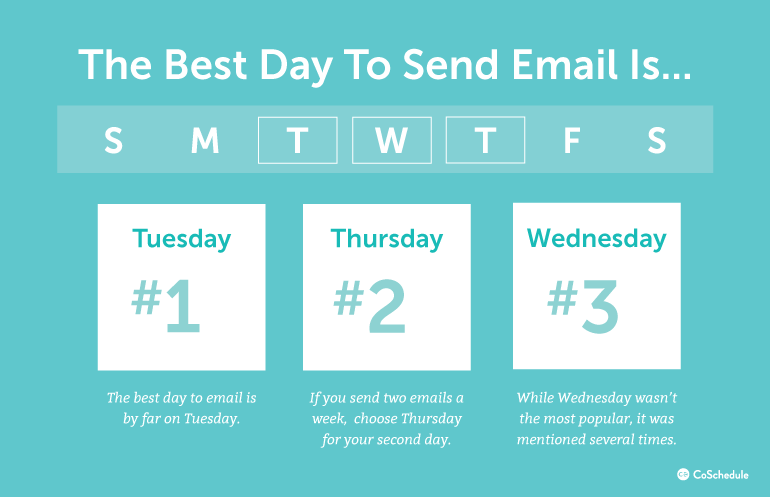
The undisputed best day to send emails is Tuesday.
That kind of makes sense, doesn’t it?
I’ve heard a ton of marketers praise sending emails on Monday as it’s the “start of the week.”
They think people will get the email ASAP and respond fast.
But here’s the truth.That’s bogus. Why?
Because the first thing most of us do on a Monday morning is to check the countless emails that piled up over the weekend.
We’re too swamped with other emails to care about a newsletter or cold pitch. So we are much more likely to miss yours.
Meanwhile, on Tuesday, we’ve cleared the inbox and have a lighter load.

Tuesdays get the most email opens compared to any other day of the week.
Surprisingly, the next best days might be over the weekend.
However, there is some conflicting data about this. For some, click and open rates are sky high. But for others, it might be the worst time to send.
HubSpot also found similar data, showing that Tuesday was indeed the best day:
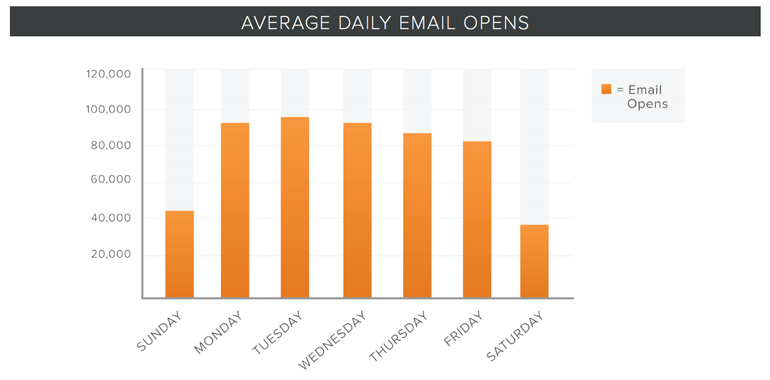
Interestingly enough, it found that Saturday was the worst day for email opens.
MailerMailer found that Tuesday was also the king and that Saturdays were lagging:
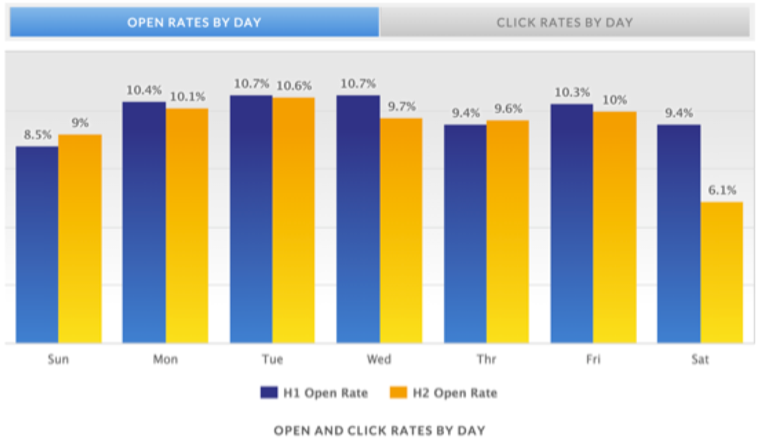
And GetResponse referenced old data from Dan Zarella that showed nearly opposite results:
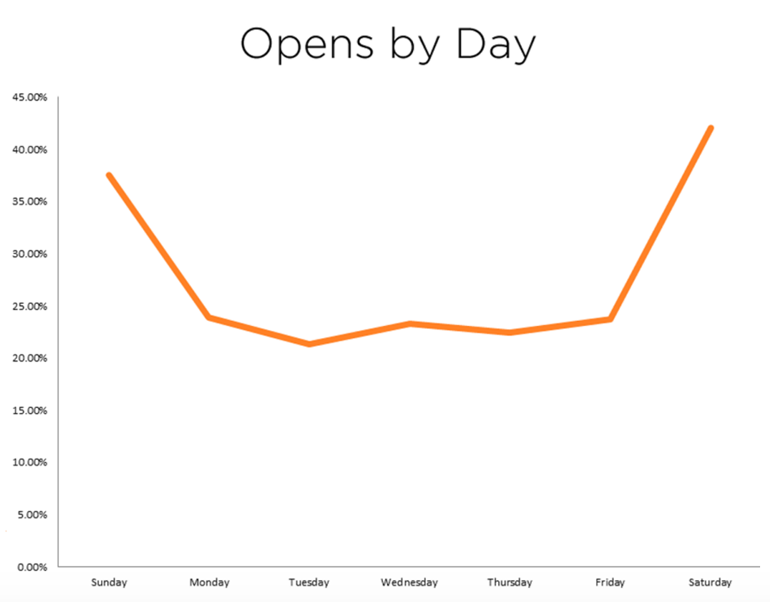
The weekend, in this case, was far better for opens and clicks. It even out-performed Tuesday by a large margin!
So how do you know? Which day should you choose?
It all goes back to the aggregate data that CoSchedule collected for us.
Here are their recommendations for days to send based on all of these studies combined:
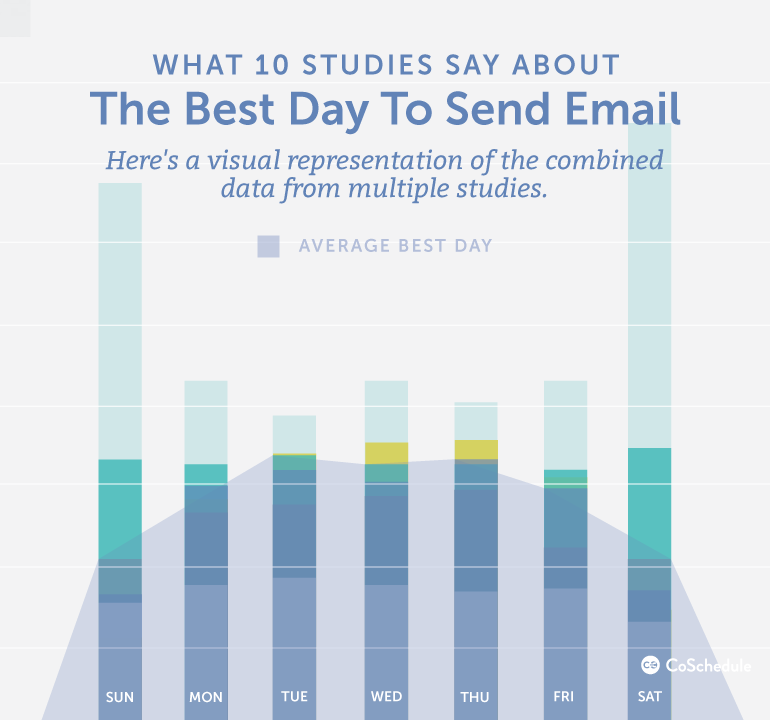
Generally speaking, the middle of the week remains your best bet.
Test it with your audiences. But you can safely default to Tuesday through Thursday.
Now, let’s take a look at the best times to send your emails!
The best times to send emails
I’ve always struggled with these questions.
When do I send emails? What’s the best time of day? And does it really matter?
It turns out that, yes, it matters a lot.Another question I get a lot deals with time zones. Do I go by Pacific Time? Eastern? Mountain? Central?
Well, considering that the Eastern Time Zone covers 50% of the entire US population, I’d stick with that.
Unless you know that the majority of your email list or customers are within a specific time zone. In that case, go with that one.
For example, if your business is locally based or the majority of your clients are in a specific region.
So without further ado, here are the best times to send your emails according to CoSchedule’s in-depth analysis:
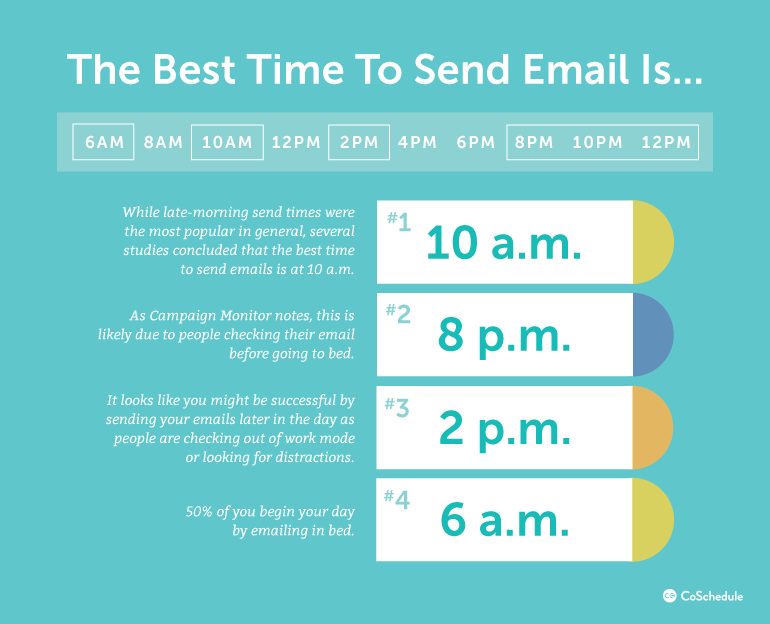
10 a.m. is the winner here. And for a good reason.
People have been awake and working for a bit. They’ve likely cleared their inbox and weeded out the junk.
That means your email is prime for sending straight to the top of their inbox!
And it’s just late enough that you’re going to catch a second wind with people on the West Coast just getting going in the morning.
The next best time? 8 p.m. Apparently, we’re all workaholics and can’t stop checking our emails, even right before bed.
These times are hyper-specific because they work.The aggregate data found that these times are the “peak” hours for sending.
But, if you’re like me, you want to see the general range of hours that work so you can run tests on your own audience.
Everybody’s customer list is different. So taking a look at multiple peak hours will help you A/B test your way to the perfect times.
For example, the peak range for millennials in college might shift a few hours. They’re going to be staying up later and sleeping in longer.
But these numbers are good for older, white-collar professionals who are usually punching in around 9 a.m. their time.
Here’s what Campaign Monitor found:
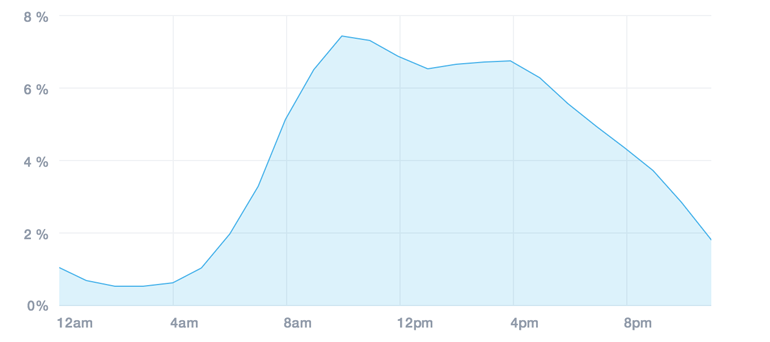
Sending emails between 9 a.m. and 11 a.m. gives you the best shot.
But realistically, anything during the normal 9-to-5 workday would be successful.
HubSpot’s data was extremely similar:
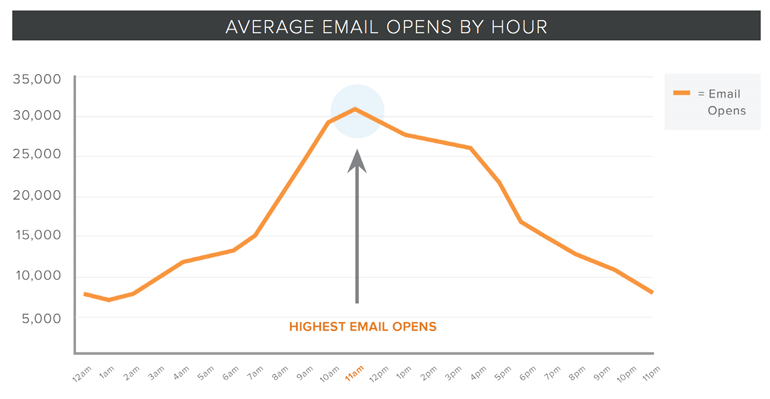
They found that the best time to send emails was 11 a.m.
Again, be sure to default to the Eastern Time Zone if your customer base is spread around the country.
MailChimp also found supporting data for this general time frame:
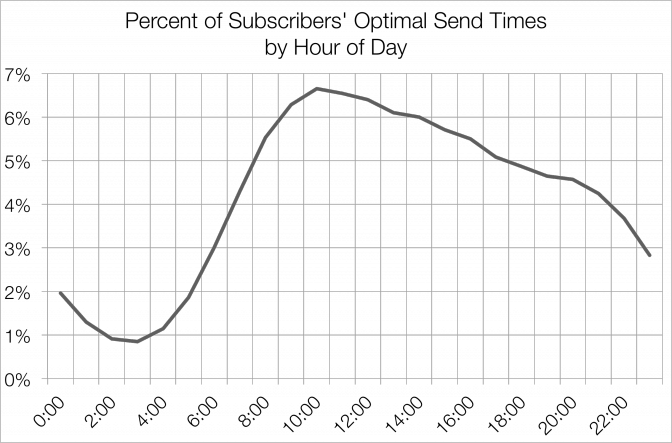
The optimal times to send emails by the hour of the day tend to be in the late morning.
Not too early, but not too late.
Make sure not to send your emails too early and risk getting lost in a junk-filled inbox.
But don’t send them too late either, or people will likely be commuting home from work.
MailerMailer also found that 10 a.m. was the best time to send emails:
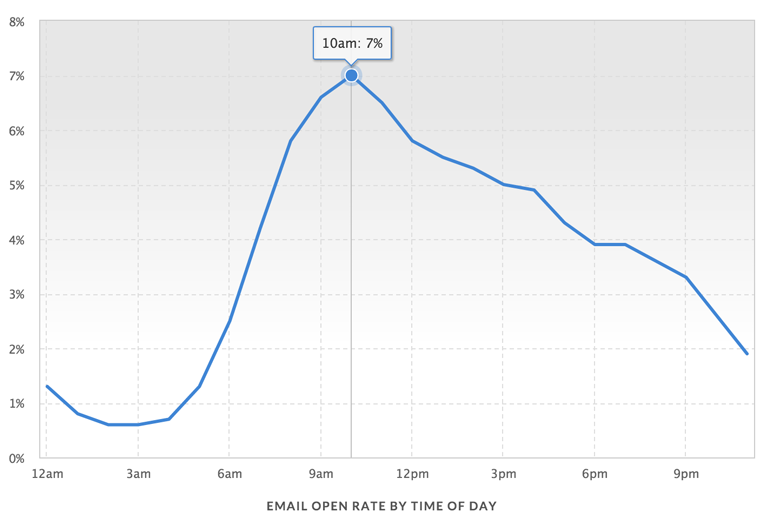
The best time of day to send your emails varies greatly in most studies.
But trends still stand strong among the pool of data.
So start testing the best times that were most common:
- 10 a.m.
- 8 p.m.
- 2 p.m.
- 6 a.m.
How to find your own “best” time and day
Studies and data to inform your marketing practices are great.
But sometimes it doesn’t turn out as planned.
Just because the top studies say Tuesday at 10 a.m. is the best time to send your emails, doesn’t mean it is for your own customer base.
Here’s what I mean.
The demographics of your email list should determine everything.
For example, if you run a locally-based business in California, you wouldn’t want to send your emails at 10 a.m. Eastern.
Instead, you should test the best times and days against your own email list.
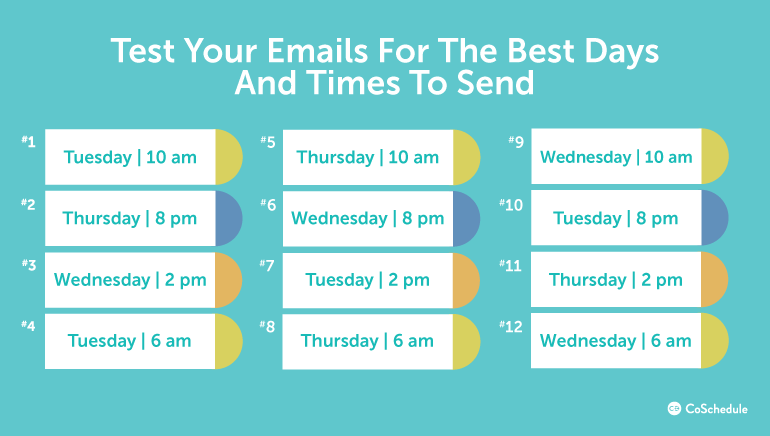
That means you might send several variations at each peak time to see what your list responds best to.
For this test, we’re going to use MailChimp’s platform to A/B test multiple times and days.
Here’s how to get started.
First, head to MailChimp and log in to your dashboard. Then, select “Create Campaign.”

Next, select “Create an Email.”
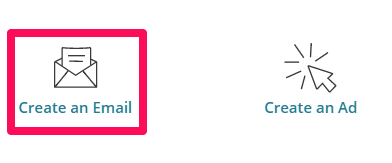
In this next step, make sure to select “A/B Test.”
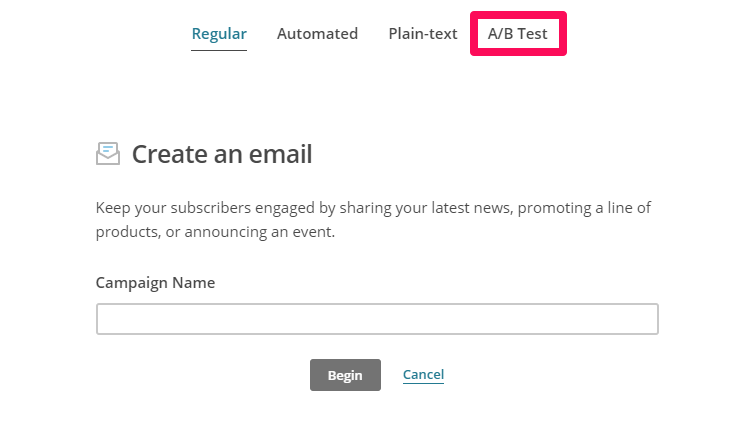
In this A/B test, you’re going to focus on the top times and days. The goal is to figure out the real best time and day for your audience.
Next, select the list you want to test.
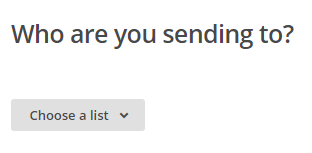
Now here’s where the important steps come into play.
They give you a few new customization options right off the bat.
In this case, we’re going to use “Send time” as the primary variable to test.
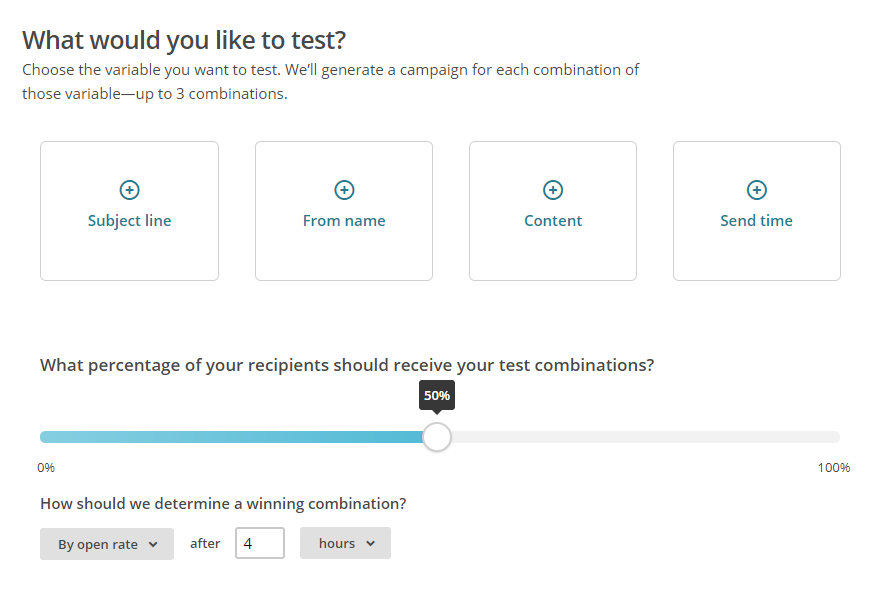
There are tons of options here, but we need to focus on the specifics.
A/B testing won’t work if we test the subject line, content, and send time all at once.
You won’t know which factor ultimately drove results. Chances are, they all contributed a little bit.
A/B testing often fails for these reasons:
- Not enough people to test
- Testing too many factors at the same time, which dilutes your results
So, for now, you’re going to focus on “Send time” only:
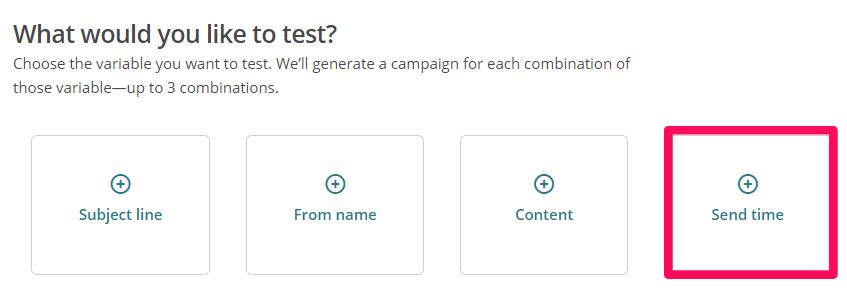
That way, you won’t risk diluting results and will actually be able to tell what factor caused the drop or increase in your success.
Next, make sure to split test the quantity at 50/50 and select 8 hours for the data.
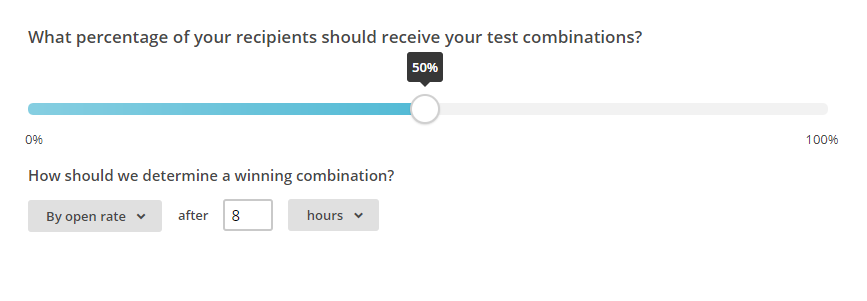
That means a winner will be declared only after eight hours, which allows time for most opens to take place.
You can also select a few other options besides open rate, like click rate or revenue.
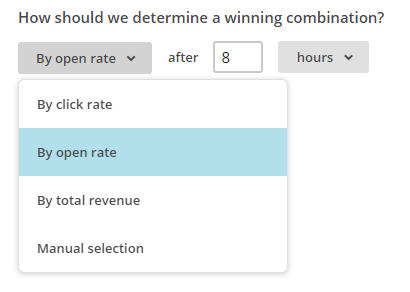
If you want to focus on metrics like ROI, select revenue.
If you’re more interested in which time of day drives clicks, then select click rate.
This section all depends on your goals and what you’re looking to accomplish!
If you want a basic test on the time and day with the highest success, you can simply stick with the open rate.
Next, make sure to select only two send times.
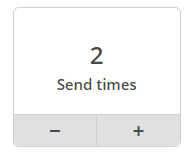
Now for the important part.
You’re going to select the two times and days to test!
Remember, the top two combined days and times to send emails are:
- Tuesday at 10 a.m.
- Thursday at 8 p.m.
So let’s test those to start with!
Enter those in your A/B test, and make sure they line up to your typical customer’s time zone.
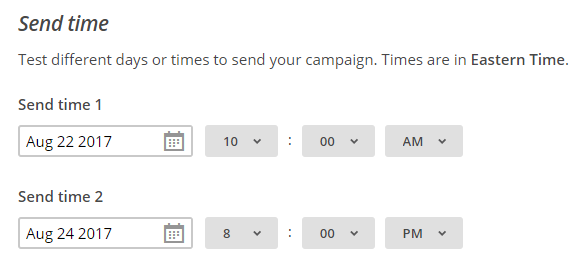
All that’s left is to make sure your campaign and content look good to go.
Pro tip: Make sure all of your content is the exact same content.
The only difference in this A/B test should be the send time.
Once you’re done with that, you can test a bunch of different times based on this list below. I created it based on the suggested times from above:
- Tuesday at 10 a.m.
- Thursday at 8 p.m.
- Wednesday at 2 p.m.
- Tuesday at 6 a.m.
- Thursday at 10 a.m.
- Wednesday at 8 p.m.
- Tuesday at 2 p.m.
- Thursday at 6 a.m.
- Wednesday at 10 a.m.
- Tuesday at 8 p.m.
- Thursday at 2 p.m.
- Wednesday at 6 a.m
Resend your unopened emails to close the gap
The test you just set up will stop after eight hours.
“Half life” refers to the time it takes for at least half of your people to see the message.
The idea is that you can’t let a test like this run forever, obviously. You can use a half life of eight hours now to capture a majority of all opens.
But there’s a downside to this approach.
What about the other half of your list that doesn’t open the email?
Do you just ignore them completely?
Of course not. There’s one final trick to test this last segment of people.
Essentially, you want to resend the exact same campaign to all of the subscribers with “unopened” emails.
If people don’t open the emails the first time around, you want to close that gap by trying one more time.
You can filter out everyone who did open so that you can pinpoint everyone else who didn’t open it.
A/B testing is all about data. You’re constantly trying to find out which small change worked the best.
So closing the gap should be your obvious next step.
Open rates tend to hover around 20%, depending on the industry you’re in.
That means the vast majority of your list won’t ever open what you send them.
That’s why you need to resend campaigns every once in a while when it’s worth it.
Plus, it’s easy to do in MailChimp based on your A/B test campaign that you just created!
Navigate to your Campaigns dashboard and click the drop-down list on the A/B test campaign you just started.
Then, click “Replicate.”
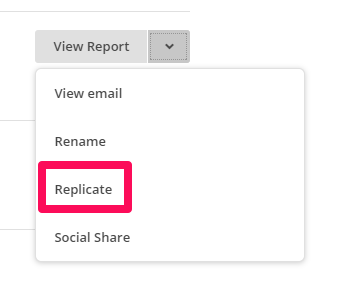
Replicating the campaign will bring you to the Recipients step. Here’s where you’ll select the people who didn’t see your earlier test.
Make sure to select “Group or new segment.”

Now you can customize the emails to send only to the group or segment that didn’t open your last campaign.
Here’s what it should look like:
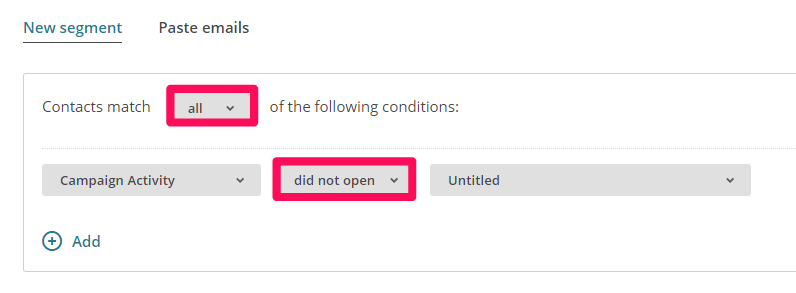
Make sure contacts match “all” of the following conditions.
Then, set the list to match “did not open” for your selected A/B test campaign.
After selecting the criteria, hit “Update Recipient Count” to get an updated number of contacts in this new segment you created.

You can get a picture of how many recipients didn’t open your email. And you’ll know how many will get retargeted with the same campaign!
Using this simple strategy can help you close the potential gaps in your A/B testing data.
Cross-reference the data from your original test with the new open rates to find out if any additional opens happened!
You can also use this technique on other campaigns.
For example, remember the scenario at the beginning?
You rushed off an email at the last second during one of the low-activity time ranges. So barely anyone looked at it.
Now, you can fix that common mistake!
Replicate your old campaign to send a few hours or days later. And watch the new results pile up.
Conclusion
Optimizing your emails should be a top priority.
Typical email click rates are awful. And open rates aren’t that great either.
But reaching customers by email has the potential to deliver a 38x return for every dollar spent.
So you can’t waste time sending emails whenever you feel like it, hoping that you’re going to land that ROI every time.
You need to go off proven data and then test that data against your own customer base.
Studies and statistics are great! Don’t get me wrong.
But they’re not always the best fit for your audience.
While Tuesday at 10 a.m. is the best time to send an email in general, you should be testing this on your own email list.
It’s incredibly easy to A/B test with MailChimp.
Simply select two different send times and 50/50 test them on your list, and then choose the best times to send your future campaigns!
What time and day have you found provides the best email results?
The post When Should You Send Emails? Here Are the Days and Times that Work Best appeared first on Neil Patel.




Comments
Post a Comment